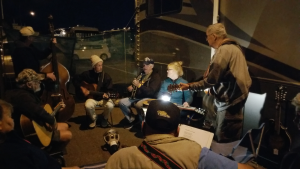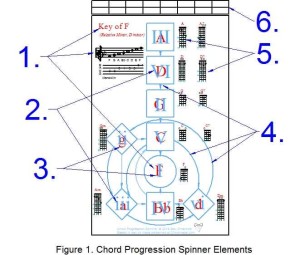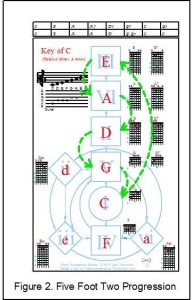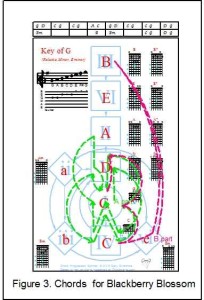We were having just another one of those perfect days of sailing in the Gulf Islands. You know, the winds are about 5 to 6 miles per hour coming from exactly were we were going. This simply means we get to tack a lot, (that is turn into the wind and sail close to the wind in a zig zag up wind direction.) Unfortunately familiarity breeds contempt. We have gotten so good at tacking that we decided we needed to spice it up a little.
Continue reading 20180728 The Grand Adventure – Part 3
Tag Archives: Bluegrass
Spring Break at Wings of History
20160326
We are just now leaving the Wings of History compound heading for the Pacific Northwest for the summer. We spent 10 days camped inside our private gated community, so to speak. Here are some of the activities we enjoyed. Continue reading Spring Break at Wings of History
Bluegrass Festival Time in Arizona:
We have been cruising around southwest Arizona for the past four weeks attending three Bluegrass festivals and the Ajo fiddle contest. The past three days in Bullhead City have been the most awesome jamming opportunities of all. Here is a photo of the group we hosted last night at our campsite.
Tomorrow we will make our way to Lake Havasu City for the next festival in two weeks.

Left to right around the circle, Barbra and Joe Magie, a bass player and guitarist that I missed their names, Mick and Fria on mandolin and dobro guitar. That is me standing and a fellow named Steve with his back to the camera. Our campfire is a propane heater and a LED lantern on the table.
Please let me know if there are still recipients out there who do not wish to receive e-mail with photos attached. This photo is 600 kb. I always trim them.
Gary
Chord Progressions Spinner:
Have you been here? You are Jammin’ with a group and doing all right on a song that is familiar but not in your normal repertoire. You are just hitting your stride as the song transitions to the “B” part and the chord progression takes a sudden turn and you just can’t quite find the proper chord. You are checking out the other musicians’ fingerings and about then another chord change comes at you.
You can hang on for the next verse and hope to scope it out then. You can make a mental note to ask about the chords before starting the next time. Or… you can grin and fake it.
To help out in this situation I have developed a tool to visualize chord progressions. I call it the “Chord Progression Spinner.”
There are six basic elements to the “Chord Progression Spinner:” (Please refer to Figure 1.)
1. Each “Spinner” represents a single Diatonic Scale, and the chords built on the degrees or notes of that scale.

2. The degrees of the scale are represented in Roman Numerals. That is they are represented by the Roman Numerals I through VII. Upper case for Major Chords and lower case for Minor Chords.
3. The degrees are also represented by the letter names of the notes each chord is built upon. That is “F” is the “F” Major chord and it represents the F, A, C triad. Similarly “g” represents the G Minor chord, the G, Bb, D triad.
4. The “Spinner” part of the presentation is a series of arrows that represent the natural flow of each chord progression as it progresses toward the Tonic or “I” chord.
5. In addition there are chord fingering charts next to each of the spinner positions showing a common fingering for that chord including in some positions the seventh chord. This reduces the need to cross reference to a chord table.
6. Finally there are 16 boxes along the top edge of the Chord Progression Spinner. This Chord Sheet represents measures in the song. Many songs are built around an eight, 16 or 32 bar phrase. You may use them to show the chord progression of the A and B parts of the song you are working on, for example. By placing the “Spinner” in a clear sheet protector you can write out the chord progression, measure by measure, using a “Dry Erase” pen.
Using the “Chord Progression Spinner” is easy. While playing, have the sheet clearly visible for the key of the song you are playing. Practice tracking the chord progression around the “Spinner” tracks. Of course the basic I-IV-V chord progression songs are no challenge, they simply circulate around the three central elements. When a chord progression takes an unusual turn quickly scan the elements close to the point of departure for a likely candidate. Then watch to see if the progression follows one of the “spinner” paths back to the Tonic.
The basic rule is, most songs move from the “comfortable” position, i.e. the Tonic to an uncomfortable position such as a distant chord around the circle of fifths such as the II chord or to a minor chord like the vi chord to create tension then resolves back to the comfortable position to bring relief.
The second rule is a progression can go anywhere at any time, so don’t expect the arrows to be the absolute truth.
The third rule is a progression can move off to a distant chord and then resolve itself by returning directly to the point of departure.
Let’s look at a couple of songs.
“Five Foot Two” is a popular song from the 20’s. I use the progression:
|C |E |A |A7 |D7 |G7 |C |G7 |
|C |E |A |A |D |G7 |C |C |
Etc.
Notice that the progression starts in the comfort zone on the Tonic, “C”. Leaps out four places on the circle of fifths to “E”, the “III” chord. It then moves steadily back through “A”, “D” and “G” to finally return to the “C” or Tonic chord. Notice also that the 7th form of the chord is intermingled almost randomly into the progression. The 7th chord creates a more urgent need to resolve to the next more comfortable step in the progression. Do not do that with the tonic, that is unless you are intentionally modulating to the Key of F.
Blackberry Blossom requires rote memorization to achieve a working speed. The chord progression is like this:
A part: |G D C G |C G A D |G D C G |C G D G |
B part: |Em | B |Em |C G D G |
I am the first to admit that this is just as complicated as the chord sheet layout. I am visually oriented and I have always preferred a graph to a table. (See if you can follow the chord progression on the Chord Progression Spinner.)
To use the Chord Progression Spinner this way I place it in a clear plastic sheet protector and enter the chord progression in the measures diagram and draw the pattern with a dry erase marker. Whether the spelled out chord progression or the diagram is more helpful to you depends on how you learn things.
If you wish to explore the chord map concept further I invite you to look up the link at Chordmaps.com. Steve Mugglin gave me permission to use concepts derived from this website. Steve’s work is very comprehensive.
I am releasing these forms under the GNU, General Public License which is a copyleft license which means the derived works can only be distributed under the same license terms. Feel free to distribute copies. I will be distributing full color copies of the forms in jpg format through my website, Dinsmore-enterprises.com. I hope you get some benefit from them.
Gary Dinsmore
Here is a link to 7-zip.org where you can pick up a zip file manager. 7 zip Open Source File Archiving Software
Here are Spinners for the keys of C, D, E, F, G, A and Bb.
Download Open Guitar sheets
Guitar_open Guitar_open
Download Power Guitar sheets
Guitar_power Guitar_Power
Download Blank Guitar Sheets
Guitar_blank Guitar_blank
Download Open Mandolin Sheets
Mandolin_open Mandolin_open
Download Power Mandolin Sheets
Mandolin_power Mandolin_power
Download Blank Mandolin Sheets
Mandolin_blank Mandolin_blank
Download Banjo Open sheets
Banjo_open Banjo_open
Download Banjo Blank Sheets
Banjo_blank Banjo_blank.
Once Bit, Twice Shy:
I am not sure how to present this. Either we are getting wimpy in our old age, or we are finally getting smart. We are in the midst of our fall migration to the southern states. Continue reading Once Bit, Twice Shy:

